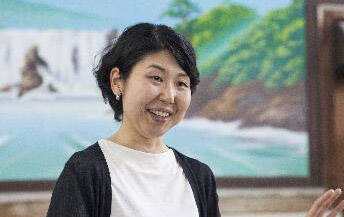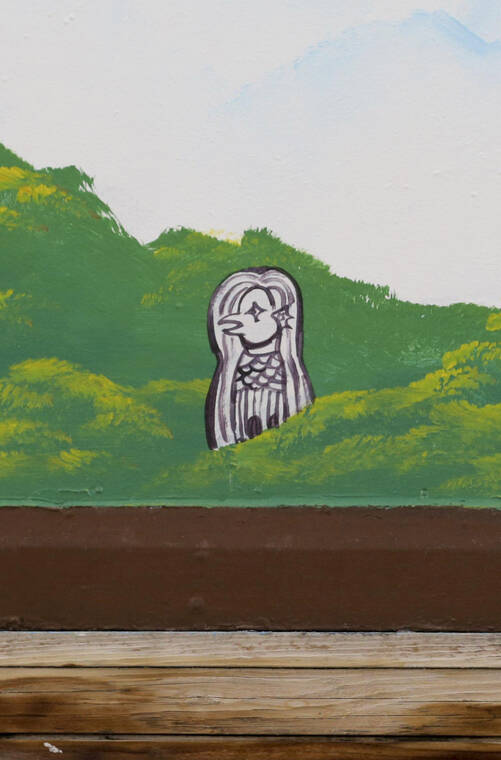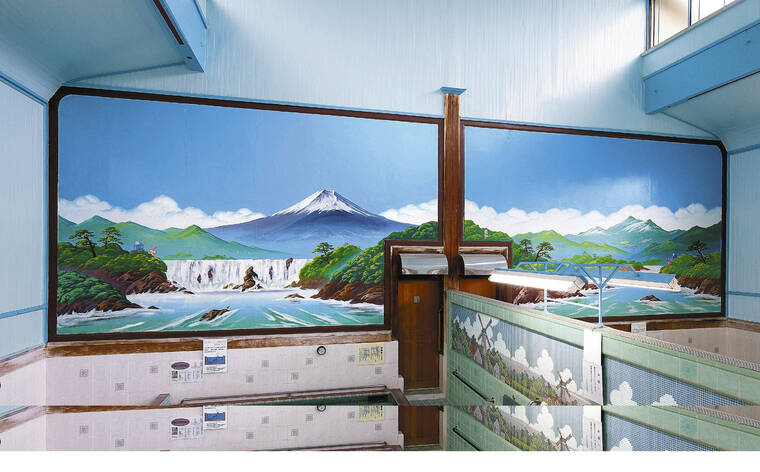Preserving art, culture of Tokyo’s public baths

YOMIURI SHIMBUN
Mizuki Tanaka, above, is one of only three artists who paints sento (public bath) murals.

YOMIURI SHIMBUN
Mizuki Tanaka included in her artwork an amabie, above, a mythical, supernatural being said to protect against diseases.

YOMIURI SHIMBUN
Painting of Mount Fuji adorns the wall of the Daini Kotobuki-yu sento in Edogawa ward, Tokyo.



TOKYO >> From the stately changing room of a nearly 60-year-old sento (public bath) in a residential area of Edogawa ward, you can enjoy a majestic view of Mount Fuji — through a painting. With white clouds floating in a blue sky, the mural runs along the men’s and women’s baths at the Daini Kotobuki-yu sento.
It was created by 38-year-old artist Mizuki Tanaka, said to be one of only three artists who paint sento in Japan. Tanaka paints 20 to 30 sento a year, on walls that are usually 32 feet wide.
“I start in the morning and paint all day when the sento is closed,” she said.
The practice of painting murals in sento is believed to have originated in the early Taisho era (1912-1926). The art is referred to as “background paintings,” and most murals are found in Tokyo sento. In rural areas the walls of sento are unadorned or bear tile art.
Tanaka painted the mural at Daini Kotobuki-yu in November 2020. Though she usually consults with clients before deciding on her design, Daini Kotobuki-yu let her have free rein.
“For the first time in a while, I decided on a standard sento painting,” she said. “As soon as you walk in, you see Mount Fuji against a clear blue sky, even when it’s dark outside. I hope the painting will brighten someone’s day or help them relax.”
Don't miss out on what's happening!
Stay in touch with breaking news, as it happens, conveniently in your email inbox. It's FREE!
She also included an amabie, a yokai (mythical creature) said to protect against disease.
Owner Kazuyuki Shigihara, 64, started his career as a boiler stoker at a sento run by his wife’s parents. Shigihara asked Tanaka to paint the mural nearly 10 years ago as a way to “breathe new life” into his sento.
These days, fewer people are patronizing public baths. Shigihara has been trying various ways to attract new customers, including creating “Oyu no Fuji,” a mascot for the local branch of the Sento Association.
Regular visitors to the sento are usually people who live alone and working couples. Even though they have a bath at home, they find it easier to come to the public facility.
After the pandemic took hold, the number of families who visited the sento fell sharply. But to Shigihara’s surprise, young customers increased, possibly because they needed a change of scenery after working from home all day.
Shigihara repeatedly sanitizes the sento and has posted a sign in the changing rooms, “mokuyoku,” which means to bathe in silence.
Tanaka majored in art history at Meiji Gakuin University. For her thesis, she researched how Mount Fuji was depicted in modern times through art at sento.
She was apprenticed to the painter Morio Nakajima, a contemporary master craftsman, after watching him paint a mural at a sento.
Yet more and more sento are closing as owners age and their popularity wanes. There are also concerns about the future of sento paintings, but Tanaka tries to think of ways to keep the art form alive. She recently formed a group of artists to work collectively to create murals.
“If a lot of people work together on a single piece, they can stably continue the work and also pass on the techniques,” she said.
“Osamu Dazai made fun of scenery, including Mount Fuji, in his novel ‘Fugaku Hyakkei’ (One Hundred Views of Mount Fuji), saying it was like a painting in a sento,” Tanaka said. “Sento art may not be considered high-end, but what fascinates me is that sento in a small corner of the city have been painted this way for a long time.”
Sento murals also raise the question: What is art?
In 2021 the Edo-Tokyo Open Air Architectural Museum in Koganei, Tokyo, opened the exhibition “The Sento: The history and the culture of the bathhouses in Tokyo.” The show introduced the culture of the sento to local and international visitors.
The exhibit traced the history of the sento in Tokyo from the Edo period (1603-1867). It focused on Tokyo-style sento architecture, which features large roofs and coffered ceilings similar to shrines and temples.
Exhibit curator Manae Kobayashi said Tokyo’s particular style of sento was popular when sento were being rebuilt after a large earthquake in 1923, referred to in Japan as the Great Kanto Earthquake, destroyed Tokyo. The impressive buildings were a sign of the times, when sento were thriving.
Outside of Tokyo, sento designs were deeply influenced by local culture. In Kyoto, sento were required to be built using Western-style architecture to differentiate them from traditional buildings.
Glass paintings of famous couples of the era were among the pieces displayed in the exhibit. The pieces once adorned the walls of the sento Ine-yu in Kyoto. They were reportedly made by a movie billboard painter at the beginning of the Showa period (1926-1989), reflecting the vitality of a time when film studios were being built one after another in Japan.



